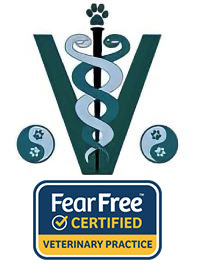Library
-
Canine grooming is important. Dogs should be kept clean, be brushed often, and get clipped as needed. If you want to do something more unique, like applying nail polish or hair dye, choosing a canine-approved product that is appropriately applied while the dog is monitored is highly recommended.
-
The two groups of spiders responsible for most medically significant spider bites include the widow spiders (Latrodectus spp., including the black widow spider) and the recluse spiders (Loxosceles spp., including the brown recluse). The clinical signs and treatment of black widow and brown recluse spider bites vary significantly due to differences in their venom.
-
The Spinone Italiano is a superb companion for the hunter or outdoorsman. These dogs follow directions, stay within close range, and willingly plow through heavy brush and dive into ponds. When not hunting, a Spinone Italiano will join you on a hike, let a toddler snuggle next to her, or play tag with the kids.
-
Spironolactone is given by mouth and is used off label to treat congestive heart failure, fluid accumulation, and other cardiovascular problems. Common side effects include increased drinking and urinating, mild decreases in energy, mild electrolyte imbalances, or vomiting/diarrhea. Do not use in pets that are allergic to it, have elevated potassium levels, Addison’s disease, acute kidney failure, significant kidney disease, that are not urinating or that may be used for breeding. If a negative reaction occurs, please call your veterinary office.
-
Spironolactone/benazepril (brand name Cardalis®) is a combination aldosterone antagonist (spironolactone) and angiotensin-converting enzyme inhibitor or ACE inhibitor (benazepril) used to treat certain types of congestive heart failure in dogs. Use to treat other heart conditions or in other species is "off label" or "extra label". Spironolactone/benazepril comes in chewable meat-flavored tablet form.
-
Spondylosis deformans is a condition that affects the vertebral bones of the spine and is characterized by the presence of bony spurs or osteophytes along the edges of the bones of the spine. Spondylosis deformans is a chronic condition that is associated with aging and most cats show no symptoms. This condition is usually diagnosed from X-rays of the spine. Treatment recommendations depend on the individual cat and whether they are showing any clinical signs, such as pain and difficulty with movement.
-
Spondylosis deformans is a condition that affects the vertebral bones of the spine and is characterized by the presence of bony spurs or osteophytes along the edges of the bones of the spine. Spondylosis deformans is a chronic condition that is associated with aging and most dogs are free of symptoms. This condition is usually diagnosed from radiographs of the spine. Treatment recommendations depend on the individual dog and whether they are showing any clinical signs such as pain and difficulty with movement.
-
Squamous cell carcinoma (SCC) is a tumor of the cells that make up the contact or upper layer of the skin. UV light exposure has been described as a developmental factor in people and appears to be associated with its development in cats. Areas affected include the ear tips, skin, toes, or peri-ocular region. Fine needle aspiration or biopsy may be performed for diagnosis. The metastatic rate does not appear overly clear, though staging is always recommended. SCC of the toe can occur as a primary tumor or may have spread from the lung (lung-digit syndrome). Surgery is almost always recommended in any case of SCC; the role of chemotherapy is controversial. Radiation therapy has an excellent response rate in cats with the SCC affecting the nasal planum and may give long-term tumor control.
-
Squamous cell carcinoma is a tumor of the cells that make up the contact or upper layer of the skin. UV light exposure has been described as a developmental factor in people, though it is still in question as to the role for dogs. Several breeds are known to be predisposed to this type of cancer. About 30% of dogs with the digital form of the disease will have evidence of spread. Regardless of the location, surgery is typically the treatment of choice, and staging is usually recommended prior to any surgery.
-
St. John’s wort is given by mouth and is used over the counter to treat pain, depression, anxiety, and other conditions. Give as directed by your veterinarian. The most common side effects include gastrointestinal upset, sun sensitivity, skin reactions, allergic reactions, dry mouth, or restlessness. Do not use in pets that are allergic to it, pregnant, nursing, very young, or very old or debilitated. If a negative reaction occurs, please call your veterinary office.


